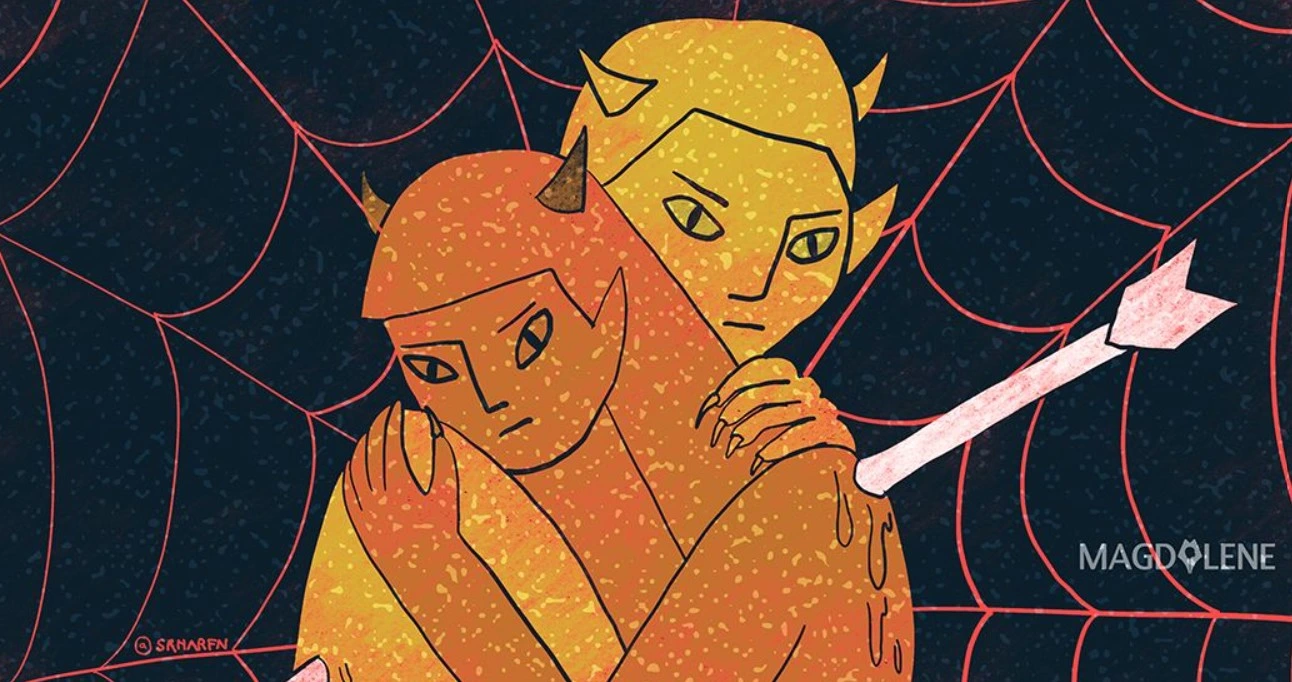‘Bridgerton’: the Real 18th-century Women Bites Back at Society

That Lady Whistedown’s acid pen belongs to none other than the ever-polite Penelope Featherington proved a shocking twist, but not one without historical precedent.
The history of 18th-century print is littered with striking instances in which women, like Featherington, used cheap print – such as magazines and periodicals – to deliver stunning satirical blows to the male-dominated status quo. They also used them to signal solidarity to the women living quietly and politely within society.
Eliza Haywood (1693-1756) was such a woman. Haywood’s best-known novella, Fantomina (1725), tells the story of a young lady who falls for a dashing gallant who, unfortunately, doesn’t like sleeping with the same woman twice. Our heroine therefore adopts a series of disguises so she can sleep with him again and again.
By presenting a scenario in which a young woman gratifies her sexual appetites without sacrificing her reputation, Fantomina asks why it is that we expect “constancy” in women but not in men.
Ultimately, our heroine falls pregnant and is sent to live out her days in a convent abroad. The apparent lesson is that vice is vice, even if nobody knows about it. For this reason, the tale could be circulated as a work of conduct literature: a genre designed to teach readers, usually women, how to behave. Along the way, however, Haywood has stealthily foregrounded a serious double standard to her readers.
Also read: The Conversation With the Composer of “How to Make Millions Before Grandma Dies”
Haywood was not alone in smuggling subversive content into conduct books. In 1753, Jane Collier published An Essay on the Art of Ingeniously Tormenting, a guide designed to teach women how to torment their husbands. As Collier explains, a true tormentor does not kill their enemy, but instead “wastes them by degrees” over as long a period as possible by teasing, nagging and embarrassing them. “The cat doth play”, she writes: “and later slays”.
From 1741 to 1746, Haywood ran a monthly periodical called The Female Spectator, which courted an audience of female readers. This was a practice the writer Jonathan Swift disparagingly called “fair sexing”: appealing to a second-hand readership of women who might inherit the paper when their husbands had finished with it. Proudly presenting itself as a magazine by women and for women, however, Haywood self-consciously carved out a space to celebrate female readers and campaign for female education.
Haywood followed The Female Spectator with The Parrot (1746), a periodical written from the perspective of a green parrot. By the time we meet Haywood’s parrot he has lived for decades and been owned by hundreds of different people from across the globe. This has left him with a sour view of humanity, whom he considers far too keen to judge a person’s qualities on their external appearances.
Also read: ‘Baby Reindeer’: How the Show Brings a Fresh Perspective to Male Sexual Victimisation
Often disregarded as a “pretty prattler” who can only repeat words without understanding and appreciated primarily as an object, if not ignored entirely, the parrot feels a keen solidarity with the women he observes. He concedes that women are by no means perfect, but that they do what they must to survive in a world ruled by men, concluding that “whatever faults [women] are guilty of in this kind, ought, me thinks, in a greater measure to be imputed to the men”.
Between 1760 and 1761 the Scottish author Charlotte Lennox, published The Lady’s Museum, a periodical promising to teach and entertain female readers. This publication pre-empted Mary Wollstonecraft’s famous condemnation in the Vindication of the Rights of Women (1792) of the “false education” which had historically taught women that they are inferior to men. In it Lennox declares that: “we live no longer in an age when prejudice condemned woman [to] shameful ignorance.”
However, though Lennox hopes that this new print culture offers an opportunity for female education, she also warns against assuming that women of prior eras were not keen and capable thinkers. There have always been women, she writes, who could be found “shaking off the yoke of fashion”, who “ventured to think justly, and speak with propriety”, and who are “not ashamed of being more learned than the idle man of fashion”. These women existed in history, Lennox assures her readers, they just need to be “found”.
Also read: Furiosa: A Mad Max Saga Does Little to Address Australia’s Dark Past
We would do well to remember Lennox’s appeal to broaden our historical assumptions and remember that progressive values are not merely a phenomenon of our own time. Bridgeton uses fantasy to present us with a vision of the 18th century that appeals to our modern sensibilities and aligns with our commitment to social justice. But reading 18th-century women writers like Haywood, Ingram and Lennox reveals that we don’t need fantasy to find these values – there were voices expressing them at the time. We just need to find them.![]()
Adam J Smith, Associate Professor in 18th-century Literature, York St John University
This article was first published on The Conversation, a global media resource that provides cutting edge ideas and people who know what they are talking about.






















